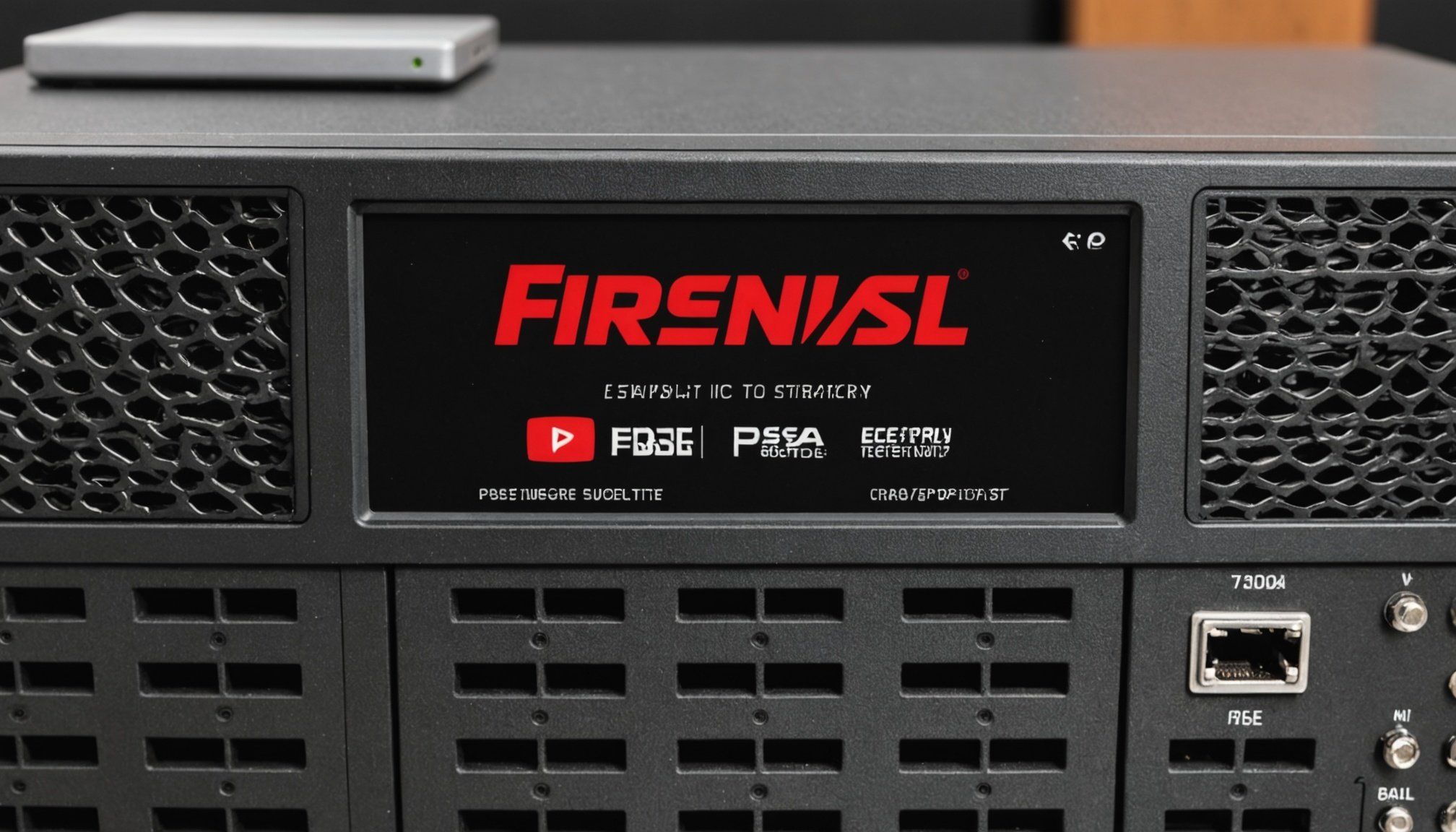Understanding the Importance of Firewall for Small Business Security
Implementing a firewall is crucial for protecting small businesses from cyber threats. These businesses face unique cybersecurity challenges due to limited resources and expertise. A well-implemented firewall acts as a barrier, keeping hackers and malicious software at bay while allowing legitimate traffic.
Small businesses often encounter basic challenges like phishing attacks, malware, and data breaches. A correctly configured firewall can mitigate these risks by monitoring and controlling incoming and outgoing network traffic. This is where pfSense comes in handy. As an open-source, robust, and cost-effective solution, it offers an advantage for firewall management that many small businesses need.
In the same genre : Unlocking peak performance: key nvme ssd configuration strategies for your asus tuf gaming x570-plus
pfSense advantages include comprehensive security features, such as intrusion detection and prevention, VPN support, and advanced logging options. This makes it easier to maintain network integrity and secure sensitive information. By employing pfSense, small businesses can leverage its range of features without incurring high costs, thus ensuring optimal cybersecurity.
Furthermore, pfsense can be configured to suit specific needs, providing flexibility and scalability. Implementing pfSense not only enhances protection but also raises awareness about cybersecurity among employees, leading to better overall security posture. The outstanding reputation of pfSense within the industry means businesses can trust in its capabilities, ensuring peace of mind.
Also read : Unleash gaming performance: optimizing your ryzen 9 5900x and rtx 3090 in a corsair 5000d airflow case
Overview of pfSense
When it comes to network security for small businesses, choosing the right open-source firewall is critical. pfSense emerges as a leading option, offering comprehensive features suitable for diverse business needs. Its versatility stems from its broad capability set, which includes robust firewall mechanisms, VPN support, and detailed system monitoring. Unlike some proprietary services, pfSense provides these advanced tools without a hefty price tag, making it accessible for businesses with limited budgets.
The comparison with other firewall options highlights pfSense’s clear advantages. Many commercial rivals impose licensing fees or limit features unless additional costs are incurred. In contrast, pfSense’s open-source nature ensures full access to its functionalities from the start. This economic efficiency does not compromise on its security offering or adaptability.
Real-world usage scenarios underscore pfSense’s practicality. Small businesses, for example, can deploy pfSense to segment guest Wi-Fi networks from main operational networks, enhancing security while maintaining network performance. Additionally, its user-friendly interface simplifies the configuration and management process, reducing the learning curve for those unfamiliar with network security systems. In conclusion, pfSense stands out by combining affordability with a powerful feature set, making it an indispensable tool for securing small business network environments.
Preparing for pfSense Installation
Setting up pfSense starts with ensuring you meet the system requirements. At a bare minimum, pfSense requires at least a 64-bit CPU, 1 GB of RAM, and 4 GB of storage, with additional resources suggesting better performance. An appropriate network card with multiple interfaces is essential for WAN and LAN connectivity.
Before installing, it’s crucial to complete the preparatory steps. Gather the necessary information about your network setup, such as IP addresses and DNS settings. This will streamline the installation process and minimize potential disruptions. Have at hand login credentials for your networks and any existing configurations that need to be ported over.
The installation checklist serves as a vital guide. It should include steps such as downloading the latest pfSense version from the official website, verifying the integrity of the downloaded file, and preparing a bootable installation media, typically a USB drive. Also, ensure the environment is ready: clear a space free from distractions, and plan for potential downtime as the system may need to be configured offline initially.
Taking these steps ensures a smooth installation of pfSense, paving the way for a robust firewall setup tailored to your small business needs.
Installing pfSense Firewall
To effectively establish a firewall for your small business, a clear understanding of the pfSense installation process is essential. Here is a step-by-step guide to getting started.
Downloading pfSense
Begin by visiting the official pfSense website to download the latest ISO file. Ensure you verify the file’s integrity using the provided checksums to confirm it hasn’t been corrupted or tampered with. This precaution is crucial for safeguarding your network security right from the installation stage.
Creating a Bootable USB
Once the pfSense ISO is downloaded, the next step involves creating a bootable USB drive. Utilise reliable software such as Rufus or Etcher. Choose the appropriate drive and the downloaded ISO to create the installation media. Ensuring the USB drive is formatted correctly is vital as improper formatting can result in installation failures.
Booting from USB
After preparing the bootable USB, insert it into the target device and restart the machine. Adjust the BIOS settings to boot from the USB. The system will launch the pfSense installer. Follow the on-screen prompts to begin the installation. It’s essential to pay close attention during configuration to ensure optimal firewall setup, catering specifically to your small business needs.
Configuring pfSense Firewall
Once the initial pfSense installation is complete, configuring the firewall is crucial to ensure comprehensive network security. The pfSense GUI provides an intuitive interface that simplifies this process. Begin by using the Initial Setup Wizard, which guides you through the basic configurations needed for your system. This includes setting time zones, DNS servers, and administering passwords – all pivotal to maintaining a secure setup.
Initial Setup Wizard
The wizard offers an easy way to define critical settings straightaway. You must configure administrative access, secure passwords, and default language preferences. This foundational step enhances firewall configuration by laying a robust groundwork.
Setting Up Interfaces
Following the setup, define WAN and LAN interfaces within the GUI. Precisely configuring these interfaces ensures that inbound and outbound traffic is governed effectively. WAN represents external connections to the internet, while LAN covers internal traffic. Misconfiguring them compromises your security settings.
Configuring Firewall Rules
Establishing effective firewall rules is paramount for fortifying your small business’s cybersecurity. It enables control over which types of traffic can enter or leave your network, dictating how external threats are mitigated. Best practices include setting rules that deny by default, while explicitly allowing verified sources. This proactive approach ensures maximum protection against potential intrusion attempts and data breaches.
Advanced Security Features
Enhancing your network security with pfSense can be achieved by leveraging its range of security enhancements and add-ons. These features provide an additional layer of protection, crucial for small businesses in thwarting sophisticated cyber threats. One vital add-on is the Virtual Private Network (VPN) integration, allowing secure remote access and protecting data exchanges over untrusted networks.
Another powerful pfSense add-on is the Intrusion Detection and Prevention System (IDS/IPS), which actively monitors for suspicious activities, allowing businesses to take preemptive measures against potential breaches. It serves as an invaluable tool by analyzing incoming and outgoing traffic, flagging unusual patterns, and blocking unauthorized access attempts.
Monitoring tools within pfSense further enhance security by offering detailed logging options. These logs provide insight into network performance, potential vulnerabilities, and unauthorized access attempts, enabling informed decision-making for security adjustments.
Implementing these advanced features not only maximizes the effectiveness of your firewall but also builds a dynamic security system tailored to evolving threats. Regularly updating and optimizing these tools ensures sustained cybersecurity for small businesses, aligning security measures with the ever-changing digital landscape. These enhancements make pfSense a competitive choice for businesses aiming to fortify their network defenses.
Testing Your Firewall Configuration
After setting up your firewall, confirming its effectiveness is imperative. Begin with security testing, an essential process that assesses the robustness of your defenses against potential cyber threats. This testing includes penetration testing, which simulates real-world attacks on your network to identify vulnerabilities before hackers do. Successful penetration testing can pinpoint weaknesses, enabling adjustments that fortify your firewall setup.
Several tools for penetration testing are available, each focusing on different aspects of network security. Tools like Metasploit can automate tests, offering insights into potential entry points, while Wireshark examines live network traffic for anomalies. These tools will help you measure the success of your security measures, highlighting areas requiring attention.
Effectiveness interpretation is crucial for actionable insights. Examine the test results to identify patterns or recurring vulnerabilities. If certain intrusion attempts succeeded, the firewall configuration might necessitate stricter rules or additional layers, like Intrusion Prevention Systems (IPS). Adjust settings based on data, refining your security posture.
By implementing detailed security testing, businesses ensure their pfSense firewall remains vigilant and adaptive, safeguarding valuable data. This proactive approach not only preempts threats but also maintains the integrity and safety of the network environment.
Troubleshooting Common Issues
Encountering challenges during pfSense troubleshooting is common; understanding these roadblocks and their solutions is key to a seamless experience. One frequent issue is connection problems—often stemming from misconfigurations in the network interfaces. A common fix includes verifying and adjusting the interface settings within the pfSense GUI, ensuring each interface is correctly assigned to its respective network.
If users experience unusual network slowdowns, checking the firewall rules can reveal potential inefficiencies or errors. Tightening configurations or realigning rules often resolves these slowdowns, ensuring optimal firewall performance. It’s crucial to review these rules consistently to avoid build-up of unnecessary processes that can hinder traffic flow.
When encountering installation errors, confirming the system requirements is essential. Ensure hardware meets the minimum criteria—like adequate RAM and CPU—before proceeding with troubleshooting steps. A mismatch can lead to unexpected system crashes or installation hitches.
For persistent issues, several support resources are accessible. The pfSense community forums provide valuable insights from experienced users, while detailed documentation offers step-by-step resolutions for specific errors. This diverse pool of support ensures users aren’t navigating these technical hurdles alone, reinforcing a collaborative approach to mastering pfSense challenges.
Best Practices for Maintaining a Secure pfSense
Ensuring your pfSense firewall remains effective involves adhering to best practices in ongoing security, maintenance, and updates. Regular attention to these areas helps small businesses mitigate risks and maintain robust cybersecurity defenses.
Importance of Updates and Patches
Consistently applying updates and patches to your pfSense installation is crucial. They address vulnerabilities and enhance system functionality, fortifying your network security against emerging threats. Ignoring updates can expose your network to exploits that could have been prevented.
Regularly Reviewing Firewall Rules
Reviewing and updating firewall rules regularly is imperative for sustaining optimal security. Periodically audit your rules to ensure they align with current business needs and address evolving cyber threats. This might involve adding new rules or modifying existing ones to enhance protective measures.
Establishing Security Audit Routines
Conducting routine security audits is essential. These audits evaluate the effectiveness of your firewall configuration and identify potential vulnerabilities. Regular assessments not only detect issues early but also foster a proactive security culture within your organization.
Implementing these best practices ensures that your pfSense setup remains vigilant and aligned with the ever-changing cybersecurity landscape. By prioritizing updates, rule reviews, and audits, small businesses can maintain a robust defense, safeguarding critical data and network performance effectively.











